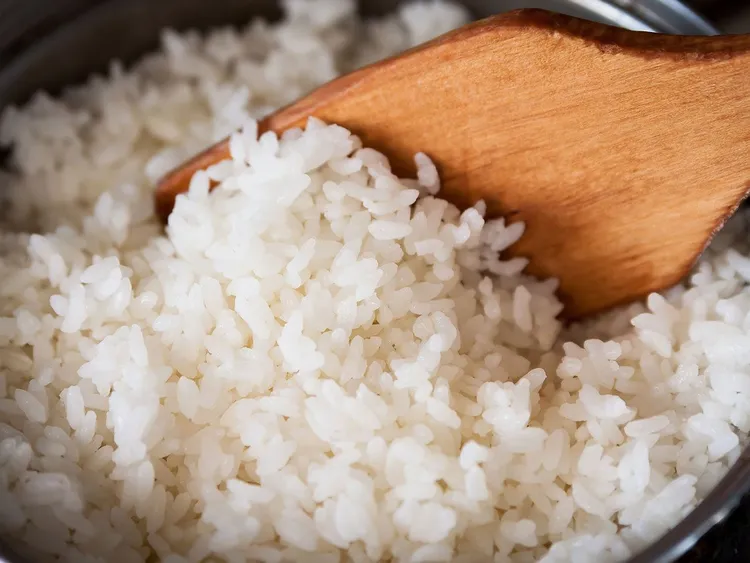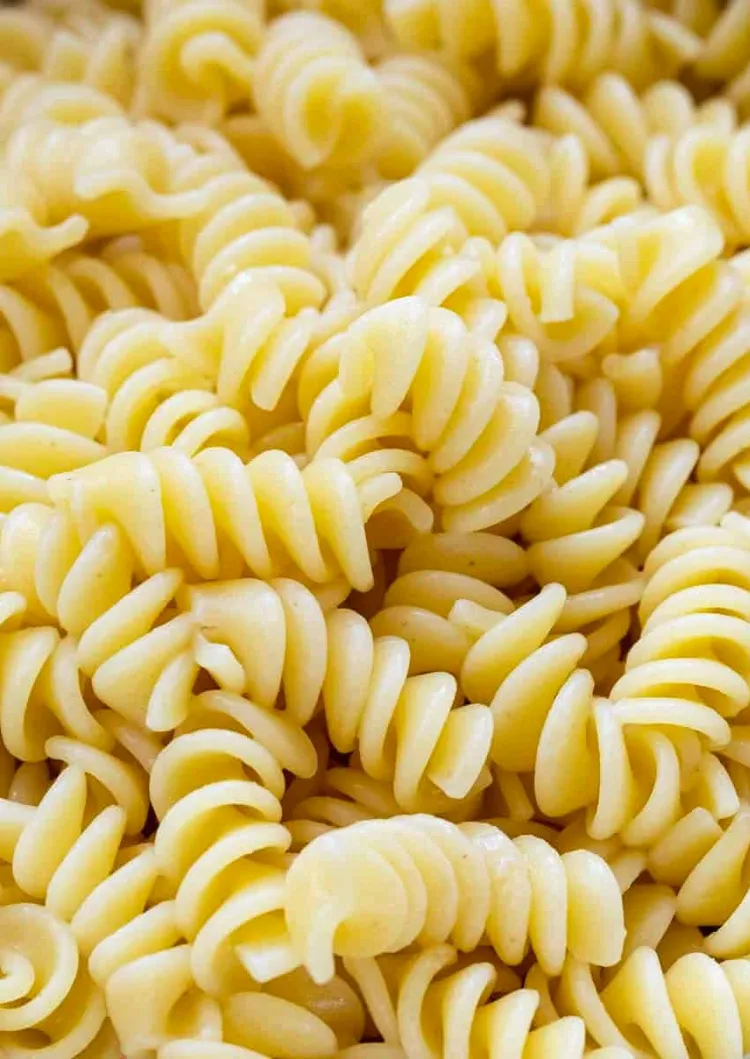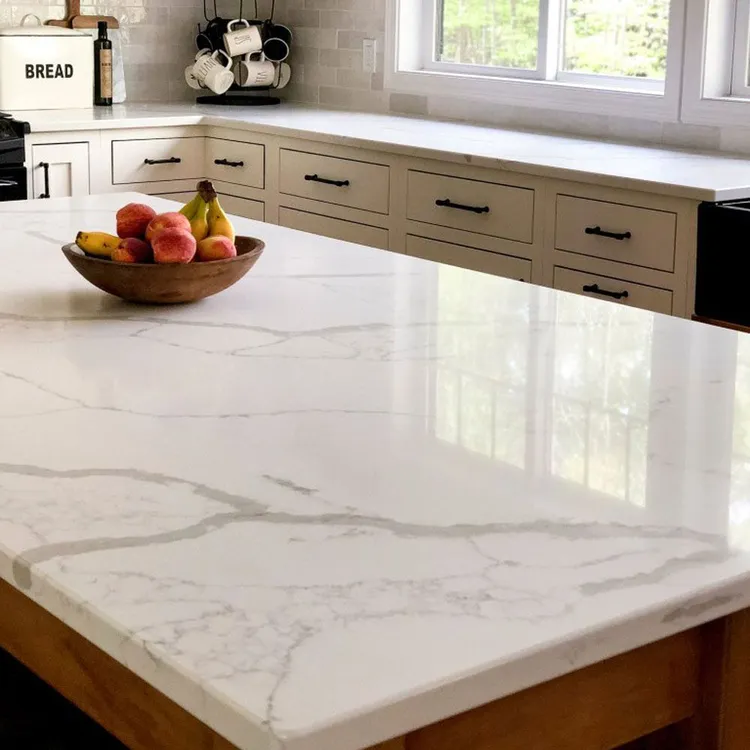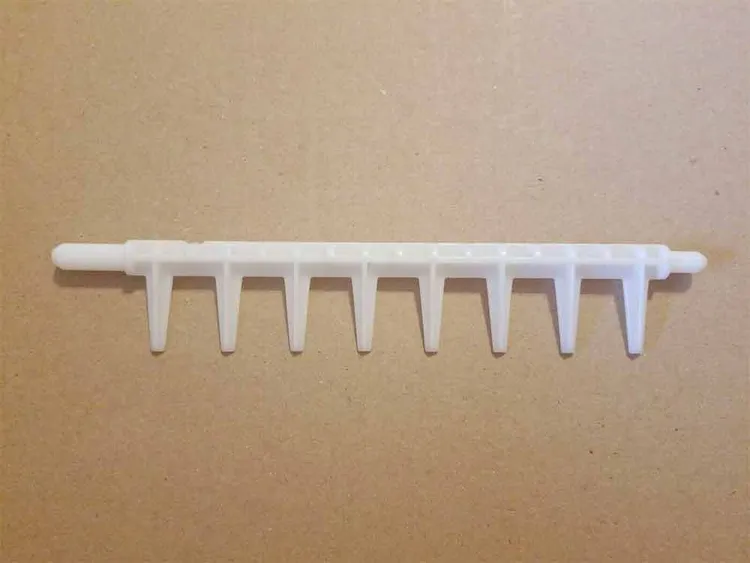Our recommendations are made independently through Research & Testing. We may receive commissions from purchases made via our links.
How Do Self-Cleaning Ovens Work?
Ever ask yourself how do self-cleaning ovens work? You’re not alone! In this guide, we’ll show you all you need to know about this wonderful appliance.
If you have ever wondered, “How do self-cleaning ovens work?”, then you’re not alone.
As useful as it is, the way a self-cleaning oven works is a mystery to many and that’s not the only question owners have. There’s also the issue of how often the oven should be put into self-cleaning mode and how safe it is to use.
We will be answering every one of these questions and more in this article.
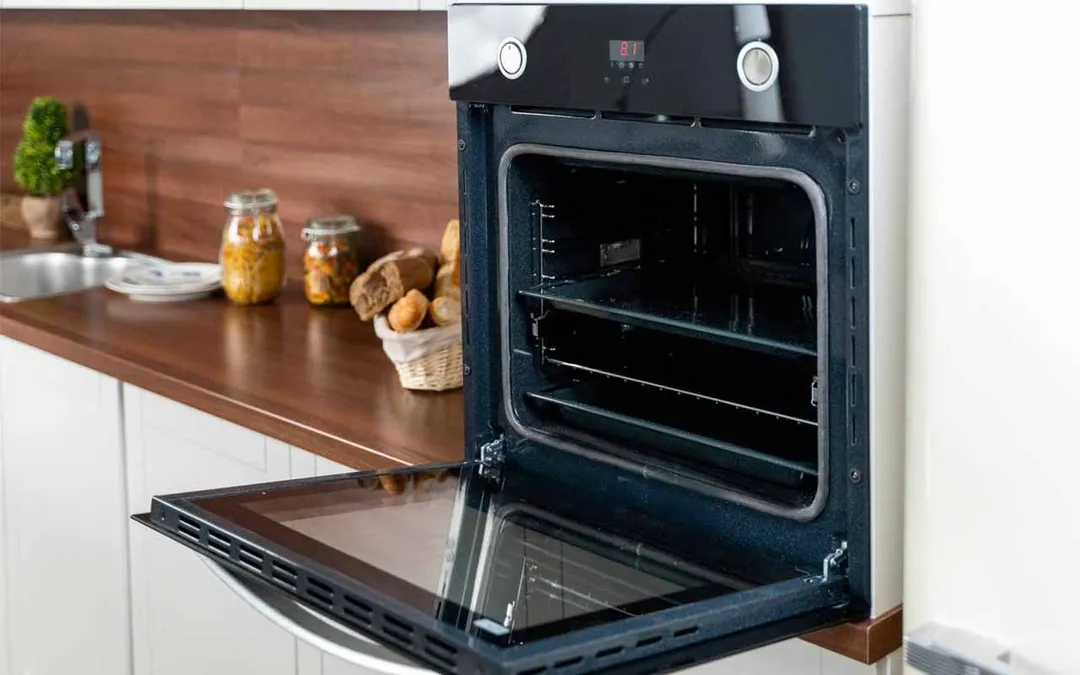
What Is a Self-Cleaning Oven and How Does It Work?
Let’s start with an easy one if you haven’t heard of this appliance before: “What is a self-cleaning oven?”
After a while, your oven will be caked in food residue, stains, and soil. With a normal oven, you will have to put in some serious elbow grease to scrub it all out. What’s more, you may have to resort to highly caustic cleaning agents to remove the stubborn stains. These chemicals aren’t good for your oven’s longevity.
A self-cleaning oven can handle part of the process for you and save you a few buckets of sweat. But more importantly, it can do it without the use of chemicals.
Here is some detailed information on the three different types of self-cleaning oven available on the market.
High-Heat Cleaning Oven
This is the more popular type out of the two. It is typically what people will think of whenever a “self-cleaning oven” is mentioned.In a high-heat (pyrolytic) cleaning oven, when a self-cleaning cycle begins, it turns the thermostat to the extreme (around 880°F to 1,000°F). The high temperature incinerates all debris, residues, and stains inside of the oven. Over the course of 3 to 4 hours, all food residues inside are reduced to powdery ashes. You can easily sweep away with a small brush.

One issue with this type of self-cleaning oven is that the process may produce a lot of fumes and smoke. Among the long list of fumes that are produced includes the infamous carbon monoxide (CO). Colorless, tasteless, and scentless, CO cannot be detected by senses. For this reason, it is responsible for thousands of injuries per year and hundreds of deaths.
As a result, whenever you run a pyrolytic oven, a key rule is to ensure that your kitchen is well ventilated.
Fortunately, companies have caught onto this issue and introduced a few changes. In recent years, many self-cleaning ovens have appeared on the market that come with a catalytic converter. The converter can absorb and reduce the amount of emissions that are produced by the oven. Ultimately, the oven is a lot safer and healthier to use.
Steam-Cleaning Oven
A steam-cleaning oven harnesses hot steam to clean instead of high temperatures.
The four walls of the cooking chamber are lined with a special type of enamel. During normal operation, the enamel absorbs and retains cooking grease, stains, and dirt. The enamel can be ‘activated’ by heat and steam, which will force it to release everything it has captured. You can then easily wipe the surfaced dirt and grease away with a cloth.

This type of self-cleaning oven is quicker than a pyrolytic oven. A cleaning session is only around 30 minutes to an hour long.
Its use of heated steam also allows the oven to work at a lower temperature. Specifically, the temperature will only go to around 150°F. This eliminates the noxious fumes that are released by burning debris.
In return, a steam-cleaning oven isn’t as thorough as a pyrolytic oven. Harsh stains may be baked right onto the enamel-coated walls and prove difficult to wash off. Fortunately, these stains won’t impact the oven’s performance. However, it does make the oven look a bit ugly.
Additionally, a steam-cleaning oven is typically a bit more expensive than your average pyrolytic oven.
Continuous Cleaning Oven (Catalytic Oven)
Continuous cleaning ovens have been out of style for a while, but you can still find and buy them today. This type of oven is also called a catalytic oven in many circles. However, it’s important to make the distinction between a catalytic oven and a pyrolytic oven equipped with a catalytic converter. They are not the same thing.
Design-wise, the walls of a catalytic oven are coated with a special type of roughly-textured, porous enamel. Mixed inside of these enamels are catalytic compounds such as metal oxides. When grease is sucked in by the absorbent enamel, the catalysts allow it to burn up into ashes at normal baking temperature.
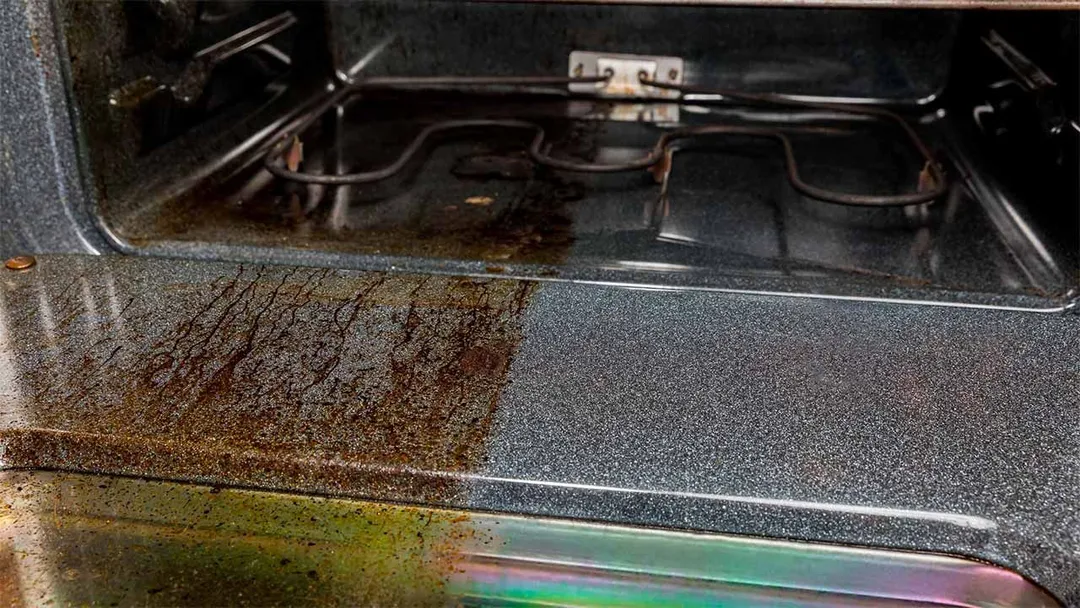
So, the process and the results of a catalytic oven are quite similar to that of a pyrolytic oven. The only difference between them is that the former functions at a much lower temperature in comparison.
A catalytic oven is the easiest out of the three to use. You only need to push a single button.
There are a few caveats, though.
A catalytic oven can only handle light stains. Larger stains are beyond its capability to clean (which is the reason why it’s become less popular compared to pyrolytic ovens).
You have to baby your catalytic oven a lot, too. When you’re baking anything that may spill, you need to cover up the interior with foil to prevent huge stains from forming. You also have to wipe the oven daily to avoid grime or stains from building up.
All those complexities, for most people, negate any amount of time and effort that’s saved by the “self-cleaning” feature. Which is why, once again, it’s no longer a popular choice on the market.
To recap this section, you can use this short table below to glean the basic differences between the two types.
| Pros | Cons |
|---|---|---|
High-Heat Oven (Pyrolytic) | ||
Steam-Cleaning Oven | ||
Continuous Cleaning Oven (Catalytic Oven) |
- Fussy to maintain
- Easy to use
- Work at lower temperatures
- Costly
- Work at lower temperatures
- Quick
- Doesn’t produce fumes
- Slow cleaning time
- Produce noxious fumes
- Clean thoroughly
- Relatively affordable
How to Safely Use a Self-Cleaning Oven
Using a self-cleaning oven is relatively simple as a good deal of the process is already handled by the oven itself. All you have to do is press a few buttons and wait it out.
But the key to safely using a self-cleaning oven is preparation.
How to Use a Pyrolytic Self-Cleaning Oven
Step 1: Prepare the Oven for a Self-Cleaning Cycle and Lock the Door
First, check the cooking chamber of the oven is empty of all pots and pans. Remove the cooking racks, too, if they are made from metal. The cleaning process could leave the racks discolored and burnt, making it hard to slide them in and out of the oven afterward.
If the cooking racks are coated in heat-resistant enamel, there’s a good chance that it can be cleaned alongside the oven. Check your user’s manual for more details.
Scrape any visible food debris or grease from the interior of the oven. Doing this will reduce the amount of harmful emissions that are released by the cleaning process.
Once everything has been checked out, shut the door tightly. Most modern ovens will have a special locking mechanism in place that will deploy automatically. It’s there to prevent any unsuspecting person from opening the oven while it’s cleaning and being blasted by 900°F heat or hot steam.
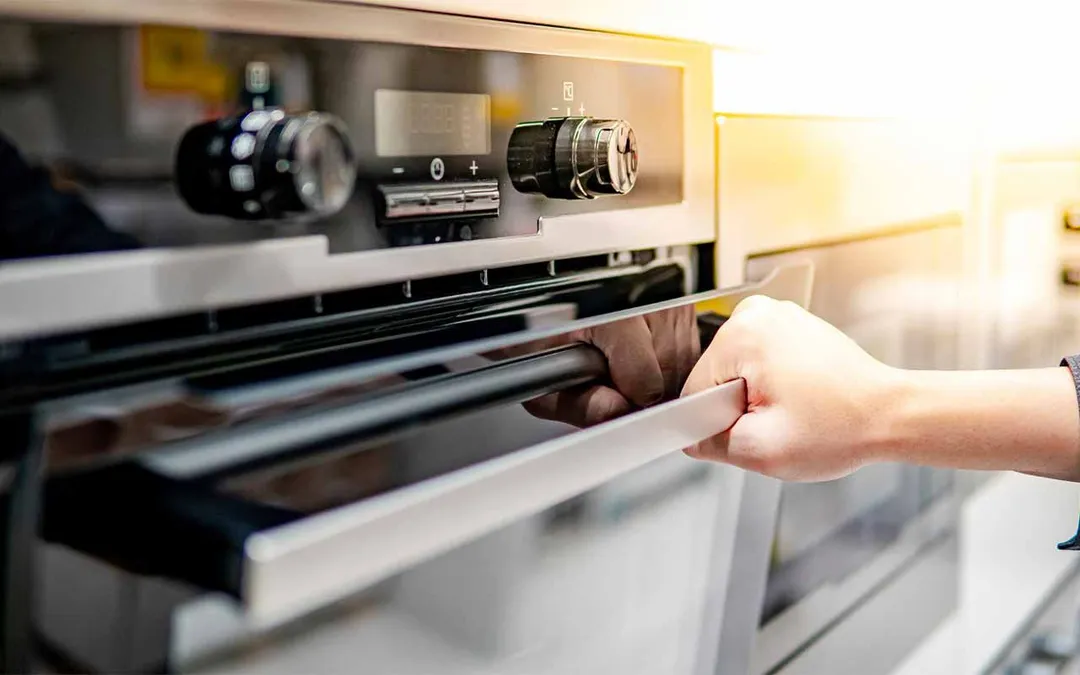
In older models, however, you may need to deploy a locking lever. Be sure to do this, if it applies to your oven.
Step 2: Ensure There Is Good Ventilation Throughout the House
Take a walk around your kitchen and open up any means of ventilation you have. If you have a range hood, open it. If there are windows in your kitchen, throw them wide open.
Whatever you do, make sure that the fumes created by the oven can escape. Like we mentioned earlier, the fumes are toxic and could be potentially life threatening if they’re concentrated in one place.
Step 3: Set Up the Timer and Hit Start
Pick the ‘Self-Cleaning’ option on the control pad of your oven (you can refer to your oven’s user manual for this).There should also be a timer. Proper timing will depend on how dirty your oven is. Around 2 hours is good enough for light to moderately dirty ovens. For heavy-duty cleaning, set 3-4 hours.

Start up the oven and allow it to clean itself for the allotted time. When the timer runs out, the oven will shut itself down automatically, so no need to hover over it.
Step 4: Clean Up
When the self-cleaning cycle has completed, the oven will shut off. However, don’t open the door until the oven has cooled down to a safe temperature. Give it anywhere between 1.5 to 2 hours.
The interior will be filled with ashes and burnt debris. So, take a brush and clean them off. If you have a handheld vacuum and the residues are loose, you can use it to quickly hoover them all up.
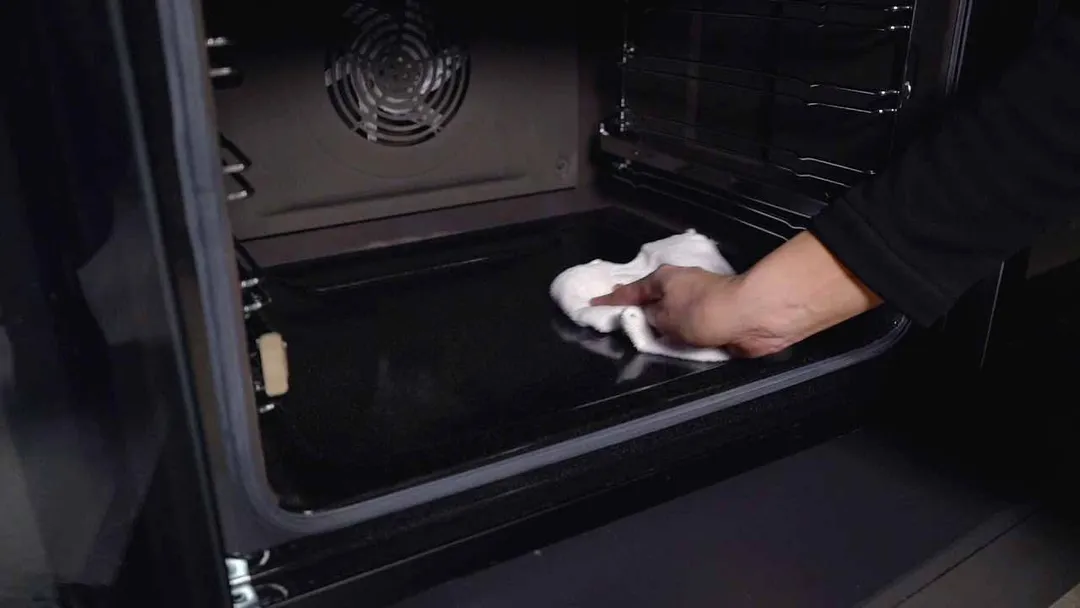
How to Use a Steam-Cleaning Oven
Step 1: Prepare the Oven for a Self-Cleaning Cycle
As with a pyrolytic oven, empty the oven of any pots and pans still residing there. Check the user’s manual to see if the racks can be cleaned alongside the oven or not. If they aren’t, take them out, too.
Step 2: Add Some Water and Lock the Door
In order to create steam, you need to add water to the oven. There’s usually no special water receptacle or pouring process. For most models, all you have to do is to pour water onto the bottom of the oven and let it sit there.
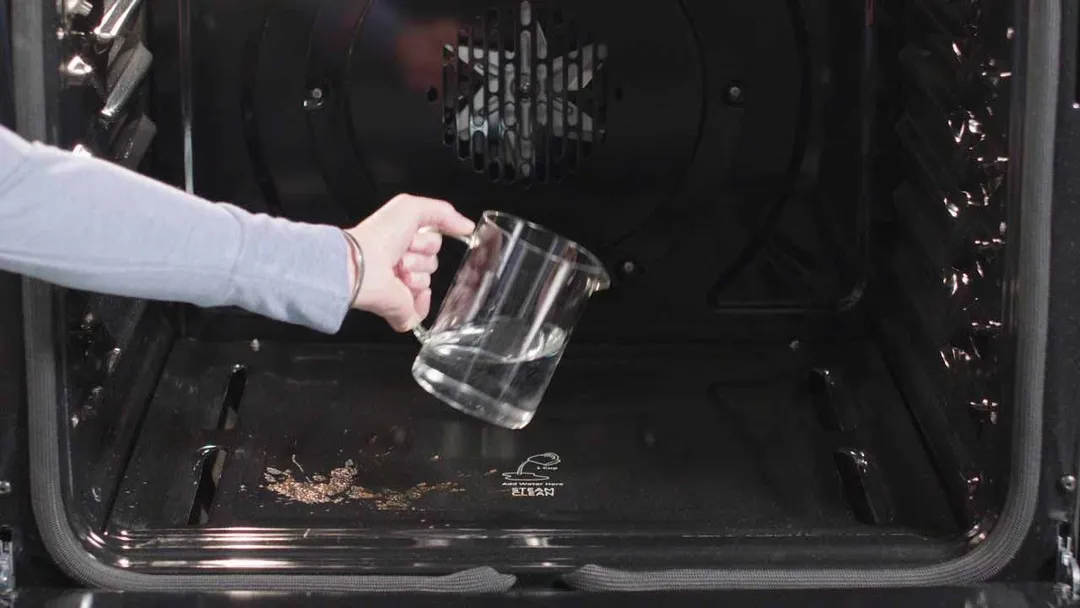
As for the exact amount of water that ought to be used, check the user’s manual for your oven. The manufacturer will have a special section that tells you in detail how much water to use.
Shut the door and lock it.
Step 3: Let It Clean
Press the clean button on the control panel and let the oven do its job. Do not open the door while it is still cleaning.
Step 4: Clean Up
After the cycle has finished (should take around an hour at most), let the oven cool down. Around an hour will do.
You can dislodge the dirt and debris inside of the oven with a brush or a scouring pad. If there’s still water at the bottom of the oven, you can soak it up with a sponge. Alternatively, you can open up the door and let the oven dry on its own.
How to Use a Continuous Cleaning Oven (Catalytic Oven)
Step 1: Prepare the Oven for a Self-Cleaning Cycle
Although the self-cleaning temperature of a catalytic oven is the same as normal baking temperature, it’s recommended that you leave the oven empty. Take out any pots, pans, and racks inside the cooking chamber.
Step 2: Ensure Proper Ventilation
A catalytic oven doesn’t straight up burn food debris. Nonetheless, it will still release a certain amount of fumes. Make sure that the kitchen is well aerated before you proceed.
Step 3: Dial In the Temperature and Time
Set the temperature to around 475°F and the timer for 1 hour. Start the oven and wait out the hour.
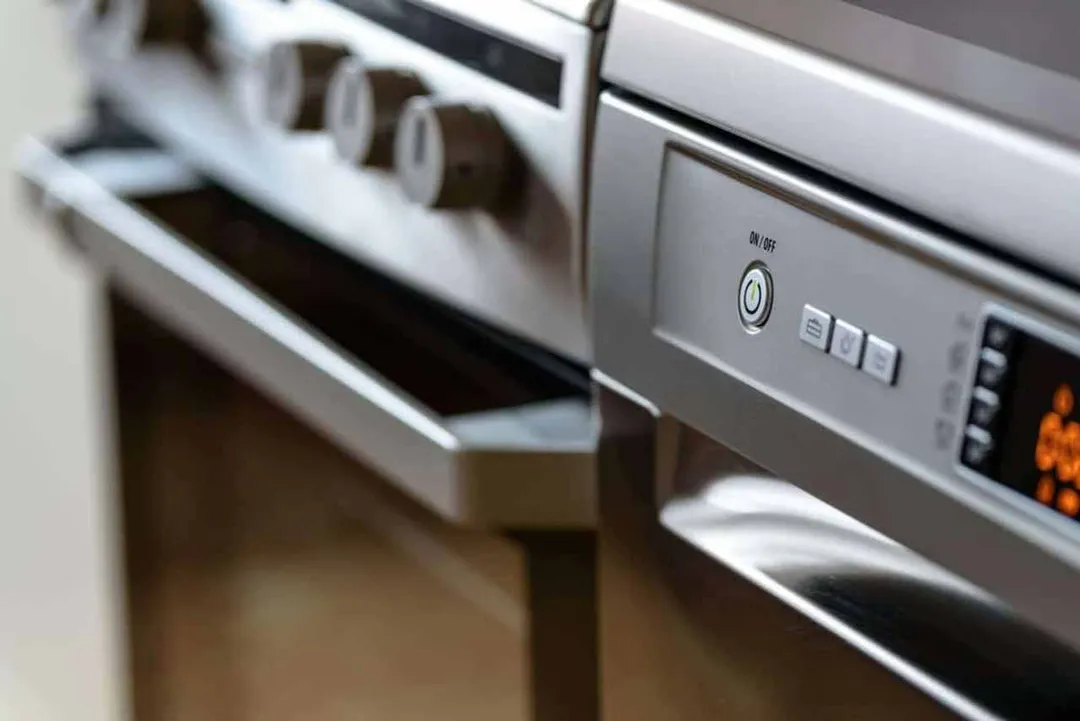
Step 4: Clean Up
After the oven has cooled down, you can sweep up the ashes at the bottom of the oven with a brush or hoover them up with a hand-held vacuum.
How to Maintain the Oven In Between Self-Cleaning Cycles
Between self-cleaning cycles, periodically clean up the oven to reduce as much gunk and debris as possible. Proper cleaning will also minimize stains and keep your oven looking good as new.
Remove Any Spillage
Deal with every spillage immediately with a dry cloth or a sponge. Don’t let it sit in the oven for too long.
Wipe Off Any Food Residue or Debris
Remove any lingering food debris from the oven after every cooking session. If it is stuck to the oven, you can try to scrape it off with a metal utensil. Most of the time, it will come loose immediately and you can sweep it away.
If the debris is stuck in an accessible place or refuses to come off, then leave it be. It can be removed in the next self-cleaning cycle.
Clean the Racks
Since metal racks cannot be cleaned along with the oven, you will have to clean them separately. And even if you have enamel racks that can be cleaned in the oven, giving them a rinse prior will help considerably.
By reducing the amount of food debris and grease that must be burned, fumes are reduced.
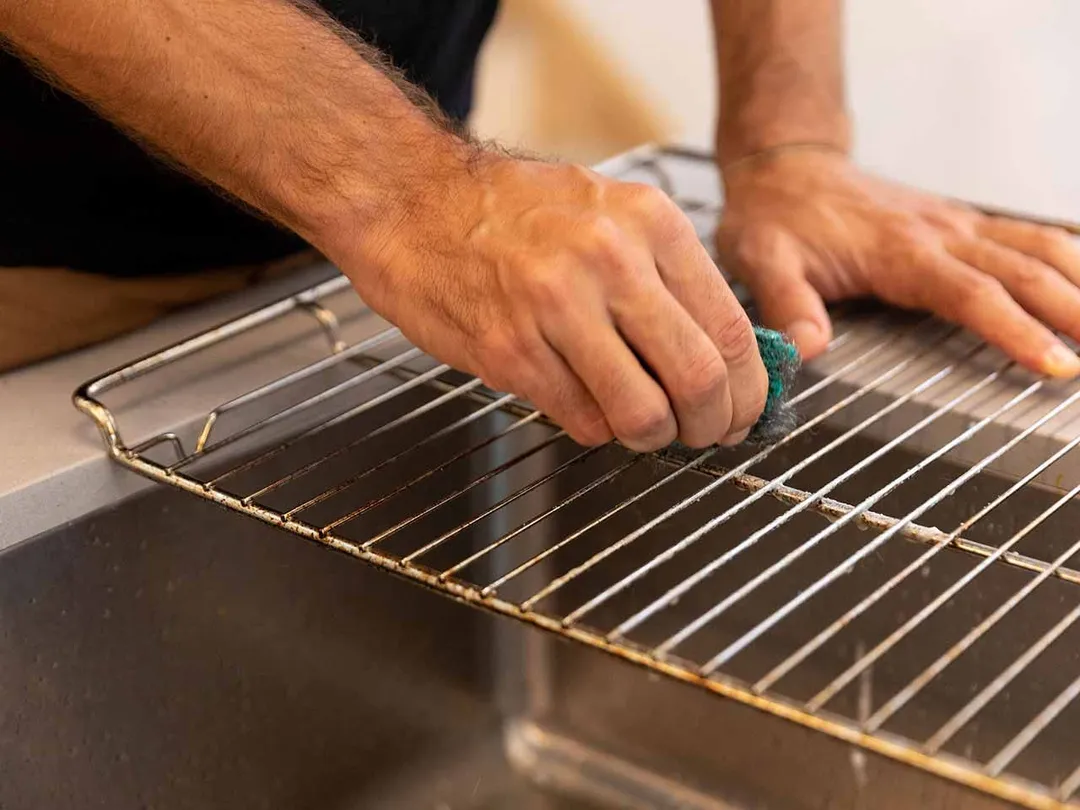
Clean the Exterior of the Oven
Don’t neglect the oven’s exterior, either. The oven is a staple component in the overall aesthetic of your kitchen so leaving it dusty and dirty is a no-no if you want to keep your cooking space eye-catching.
How Often Should the Oven Be Self-Cleaned?
There’s really no definitive answer to this. It will depend on how often you tend to clean your kitchen and how dirty the oven is.
If your oven is used sparingly and is only moderately dirty, one session every 5 to 6 months will do the job.
On the other hand, if you use your oven intensively and it collects all manner of gunk in a matter of weeks, then let it self-clean every 3 months.
Is It Safe to Allow the Oven to Self-Clean Unattended?
Don’t take the term “self-cleaning” at face value and let it clean itself unsupervised. No matter what type, how reliable, or how expensive and well-built your oven is, it’s never a good idea to let it work on its own.
An adult should always be nearby while the oven is working.
Is the Burning Scent Wafting from the Oven a Concern?
A pyrolytic self-cleaning oven will produce a burning scent while it self-cleans. This is from all of the food debris burning during the cycle.
As for whether these acrid fumes are harmful or not, the answer is yes. It is not a good idea to breathe in these fumes. This is the reason why it is so important to ensure that there is proper ventilation in the kitchen at all times.
Prolonged exposure to these fumes may cause or worsen some health problems. It can irritate your nose and throat, cause headaches, or make you nauseous.
Children and elderly people are more vulnerable to these fumes, especially those with asthma or heart and lung issues. Therefore, when you put the oven in self-cleaning mode, you should bar the children from the kitchen and tell the elderly in your household to be extra careful.
If you can, only let the oven self-clean at times when there aren’t many people in the house.
Are Flames Inside of the Oven Dangerous?
Despite the above-described working principle of a pyrolytic oven, flames should not be present at any time during the process. Smoke is normal, but a flame isn’t.
If a fire does appear in your oven as it self-cleans, it is most likely a grease fire. Food debris will be reduced to ash without much fanfare. However, cooking oils may be ignited by the high heat from the oven.
Certain types of oil have a very low auto-ignition temperature. When temperature surpasses this point, the oil may turn into a flame.
Canola oil, for example, has an autoignition point of only 714.2°F. An average pyrolytic oven self-cleans at 880°F to 1,000°F. So, it’s very easy for a grease fire to appear if canola grease is present.
If you see a fire in the oven, DO NOT TRY TO OPEN THE DOOR. If you do, oxygen in the kitchen will rush in and make the fire worse. Hot air will also blast from the oven into your kitchen, possibly setting it on fire.
Fortunately, many modern ovens have a locking mechanism in place to prevent this from happening. But if you have an old pyrolytic oven with a lever lock, resist this urge.
The oven is built to handle high temperatures, even those of a fire. So, don’t freak out; keep the fire contained in the oven.
Shut down the oven by pressing the power button.
Let the fire fizzle out on its own. Once it has exhausted its oxygen supply, it will go out.
Allow the oven to cool for around 1 to 2 hours.
Open the oven and check the inside. If there is still grease present, wipe as much of it off as you can. Use a sponge or a scrubbing pad, if you must.
Resume the self-clean cycle afterward once the problem has been corrected.
Conclusion
There is no doubt a self-cleaning oven is a step up from your average oven. Having it in your kitchen will make your life a whole lot easier when it comes to cleaning and maintaining your space.
We hope you’re satisfied with our answers to your question: “How do self-cleaning ovens work?”
If you have anything else that you would like to ask us, the comment section is open below.
Authors
Luna Regina is an accomplished writer and author who dedicates her career to empowering home cooks and making cooking effortless for everyone. She is the founder of HealthyKitchen101.com and HealthyRecipes101.com, where she works with her team to develop easy, nutritious recipes and help aspiring cooks choose the right kitchen appliances.

